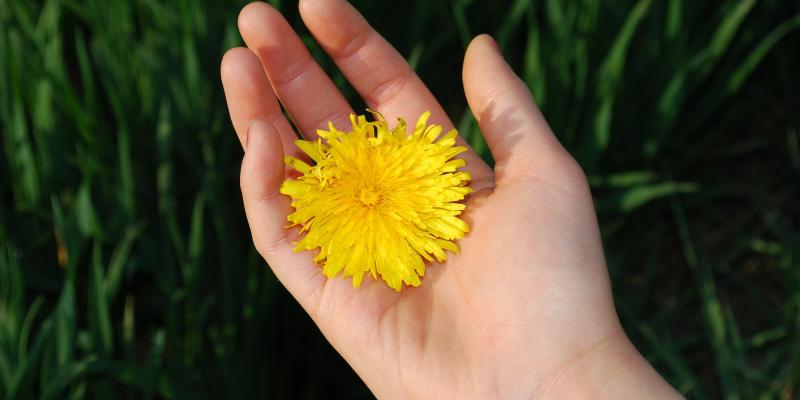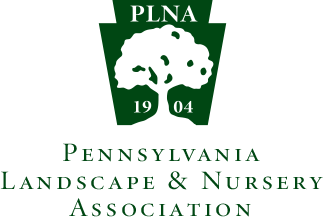Choosing the Right Food for Your Lawn: Organic Based Fertilizer vs. Chemical Fertilizer

That’s why it’s so important to familiarize yourself with the various types of fertilizers and learn how to use them correctly. As a leading lawn fertilization service that serves Bucks County, PA, Go Green Lawn Services knows a thing or two about growing healthy grass. In this article, we break down some of the differences between organic and chemical fertilizers, and provide an insight into what elements comprise each type of fertilizer.
What are the major types of organic and inorganic fertilizers?
Common Organic Fertilizers
- Cow Manure
- Bat Guano
- Bone Meal
- Organic Compost
- Common Chemical Fertilizers
A Few Things You Should Know About Organic Fertilizer
When it comes to choosing the best nutrients available for their lawn, many Phoenixville residents are turning to organic fertilization. Regular fertilization of your lawn encourages stronger roots and builds a defense against weeds, eliminating the need for excessive herbicide treatments. There are many reasons that you might want to choose to have organic lawn care treatments, for your lawn.
Avoid unnecessary treatments
Conventional lawn care treatments can be harsh, and may even contain chemicals that are dangerous to you and your pets. When you choose organic fertilization for your lawn, you can preserve the health of your lawn, without putting your loved ones at risk of exposure to unnecessary chemicals. Organic lawn care treatments encourage fresh, green growth through the use of botanical-based fertilizers and core aeration treatment.
Gain a much greener lawn and healthier landscape
Holganix and other organic fertilizers help to boost the health of your lawn’s roots. This means, now that Spring is finally here, your lawn will grow back much thicker and healthier. If you’ve been searching for the formula that will bring you a vivid green lawn, then it’s important to consider organic methods. Just like traditional treatments, our Phoenixville organic fertilization services will help encourage chlorophyll production, which will lead to a much greener lawn all year long. However, unlike traditional treatments, true organic fertilizers are a 100% bionutritional option.
Organic fertilization better protects against erosion
Soil erosion can eat away at your yard and cause small holes, dips, and pits to form. Organic fertilization encourages a solid foundation for your grass. Strong roots hold the soil together better, so even the strongest April showers won’t damage your lawn’s surface.
Slower release time means fewer treatments
Electing to use an organic fertilizer will not only deliver the more eco-friendly, sustainable option, but you will also save money in the long run. Because organic fertilizers have a slower release, it is very difficult to over-fertilize. This means you’ll find that you will need fewer treatments over the years.
At Go Green, we have several environmentally-friendly options that will bring you the hassle-free, beautiful lawn you deserve. Contact us today to learn more about how our team of Phoenixville lawn care experts can help you prepare for warmer months to ahead!
The Benefits of Organic Fertilization
It’s easy to get overwhelmed by all the fertilizer choices available, so we’re going to break it down for you. The three major types of organic fertilizer are dry, liquid, and growth enhancers. Dry fertilizers are either a single ingredient or a blend of ingredients, both designed to feed plants over a long period of time. Liquid fertilizers are nutrients in liquid form and are swiftly absorbed by the soil and plants. Growth enhancers aren’t necessarily fertilizers, but they help plants absorb nutrients from the soil more efficiently.
Organic Fertilizer: The Breakdown
Like individuals, every lawn or garden is unique. Whether you’re growing plants, vegetables, or just grass, one thing they all have in common is the need for fertilizer. Fertilizers are added to soil to supply essential nutrients and enhance plant growth. While all living things need an appropriate blend of numerous nutrients, the three components most important to have in fertilizer are:
- Nitrogen: develops nutrients to fuel new growth
- Phosphorus: promotes good root growth and blooms
- Potassium: builds protein and immunity to disease
When you’re looking at fertilizers, you’ll notice each bag has a different three number code printed on the front label. This code is a breakdown of the amount of nitrogen (N), phosphorus (P), and potassium (K) contained in the fertilizer. They are always labeled in this order, so just remember the acronym NPK.
Fertilizers are labeled this way because different plants and vegetables need different amounts of NPK to flourish. Usually, the fertilizer bag will also tell you which organism it’s best suited for. If you look at the nutrition label, you’ll notice that fertilizers also contain other elements like calcium, magnesium, and sulfur. These are extra ingredients that provide further support and stability to plant life. If you’re unsure about which fertilizer is best suited for your particular plant, call Go Green Lawn Services, your local neighborhood lawn service that serves Newtown, PA, and other areas, at (610) 285-7947.
Which fertilizer type should you buy?
Before you even begin thinking of fertilizer, you need to conduct a soil test. Soil testing kits are often inexpensive and reveal which nutrients are plentiful and which ones are lacking. That way, you know exactly what nutrients you need to have a flourishing garden.
Dry fertilizers are often made up of kelp, rock phosphate, or a blend of many natural ingredients. Blends are generally formulated to provide a balanced amount of essential nutrients, promoting healthy soil and plant growth. The most significant advantage of using a dry fertilizer is that it disperses said nutrients over a long period of time. This type of fertilizer is usually best suited for lawns suffering from dry weather because it will burn slowly. The best way to apply dry fertilizer is by dispersing it in the top 4-6 inches of soil.
Liquid fertilizers are a blend of essential nutrients that can give plants a quick boost. Due to its fluid nature, this type of fertilizer is absorbed quickly by the soil and can even be fed to the plants directly. Unlike dry fertilizer, liquid fertilizer requires regular application because it is used up so quickly. Administering this agent during growing season gives fast-growing plants an extra boost that you can quickly see. However, prolonged usage of liquid fertilizer could strip the soil of essential nutrients if not applying often enough.
If your plants aren’t getting enough nutrients from the soil, you can use growth enhancers! Growth enhancers do exactly what they advertise: they enhance growth by helping plants absorb nutrients in the soil more efficiently. This shouldn’t be used instead of fertilizer, but in addition to it.
Which fertilizer is best for your lawn or garden depends on what your gardening goals are. Always start with a soil test to determine the consistency of your soil, then take it from there. If you don’t know what your next steps should be, don’t worry! Go Green Lawn Services can provide a full, custom service to your lawn – from the soil test to the core aeration service, right in Wilmington, DE. Browse our website to learn more!
Sodium Nitrates
- Ammonium Sulfate
- Superphosphate
- Dicalcium Phosphate Slag
You may have heard about people using compost and cow manure on their lawns and gardens before, but there are many more ways to feed your grass — some of which you probably haven’t heard of! For instance, slag is a byproduct of steel manufacturing that is used to treat soil that is too acidic.
What are the three parts of fertilizer?
The three macronutrients that are essential in fertilizers are Nitrogen, Phosphorus, and Potassium. Fertilizers are rated by their concentrations of each of these elements, but different combinations of the three main ingredients can be utilized for specific use-cases to maximize results.
Other major types of fertilizers:
- Complete Inorganic Fertilizer
- Liquid Fertilizer
- Fertilizer With Insecticide
- Slow Release Fertilizer
- Special Purpose Fertilizer
Highly Concentrated Urea
There are so many options because every lawn and garden is unique! Make sure you find the right fertilizer formula for your lawn’s individual needs. The results will be worth it.
Contact Go Green Lawn Services to Determine Your Lawn’s Ideal Diet
At Go Green Lawn Services, we consider ourselves lawn-nutritionists because we excel at helping our neighbors maintain healthy lawns. We help you select the right combination of the three essential elements of fertilizer — Nitrogen, Phosphorus, and Potassium — to ensure that your grass and gardens get the sustenance they need to thrive year-round.
Reach out to Go Green Lawn Services today for help with lawn maintenance, landscaping, and mosquito control in PA, NJ, MD, and DE.





